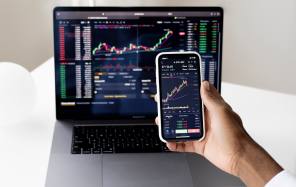

There is good reason for this as these assets often act as safe havens, meaning they can help to diversify a portfolio of bonds and equities. This year has seen few market ruptures but investors have returned to gold regardless.
Chris Mellor, executive director, product management at Source ETF, observes: “While the risk-on move in markets in November and December coincided with gold outflows, investors have come back in aggressively in 2017. As geopolitical risks continue to worry politicians and investors alike, we fully expect gold flows to continue."
Mr Mellor says events in 2016 explain why the appetite for gold is growing.
“Last year’s key drivers were market volatility, the shock of the Brexit vote and the uncertainty in the run-up to the US presidential election," he explains. “Political and economic fears continue to worry investors in 2017."
The Source Physical Gold exchange-traded fund (ETF) has seen more than half a billion dollars of inflows since the start of 2017 and over $2bn since the start of last year.
Another reason for increased flows into gold and precious metals may be because there are now more ways in which investors can access these investments.
The World Gold Council's John Mulligan acknowledges this can vary from buying gold in physical form such as bars and coins, to getting exposure through gold ETFs that are listed on a stock exchange.
He notes: "The cost of directly owning physical gold, if on a substantial scale, may involve storage and insurance costs. However, it is now often possible to invest in gold accumulation plans and gold-backed saving plans which allow investors to slowly build their holdings. Similarly, there are now a range of low cost online platforms that buy, sell and vault gold on behalf of the investor, although there may be an additional cost if you wish to receive the physical gold rather than its equivalent cash value.
"The expenses associated with gold ETFs typically include a very small annual fee, to cover fund management and administrative costs, and these products are typically highly liquid. The gold ETF market, with total investor holdings currently valued at around $93bn, has made gold accessible to a far wider set of investors."
He adds: "Finally, there are gold mining stocks and gold mining funds which offer some exposure to the gold price but have a far different risk and return profile, as with any equity-based investment. In a buoyant market they may offer considerable upside, but the investor may also face a steeper decline if the market reverses."
As with any asset class, investors should consider which vehicle gives them an exposure that suits their investment boundaries.
Rory Mcpherson, head of investment strategy at Psigma Investment Management, believes it makes sense to have an allocation to gold and precious metal in portfolios.
"Precious metal stocks tend to do best in moments of uncertainty, of which there are many at the moment. Added kickers for these stocks will be when inflation is higher than expected and reflationary juices start flowing."
But he warns: "These are very choppy investments which tend to over-react, in both directions, to newsflow. As such, we tend to be pretty active in how we trade them."
Editor's Pick
BlackRock Gold & General
Veteran investor Evy Hambro manages this £1.1bn fund and was joined in July 2015 by Tom Holl. The fund invests in shares of companies which derive a significant proportion of their income from the mining of gold or other precious metals. Among its top 10 holdings are Newcrest Mining and Silver Wheaton. FE Analytics shows that the fund is down 14.3 per cent over the five years to June 2 2017, but its benchmark, the FTSE Gold Mines index, has fallen 34.2 per cent over the same period. Performance has since picked up and the fund is up 44.4 per cent over three years to June 2, broadly in line with the index's 45.6 per cent gain.
Fund Picks
HC Charteris Gold & Precious Metals
Launched in February 2010, this £16m fund is managed by Ian Williams. The majority of the fund is invested directly in blue-chip gold and precious metal mining companies. Some 25 per cent will be allocated to mid-cap/smaller gold mining companies, while 10 per cent of the fund can be held in exchange-traded products. At the end of March, the portfolio had 34 per cent allocated to gold and 64 per cent in silver. Over the three years to June 2 the fund has generated a 27.1 per cent return.
Ruffer Gold
This £683m fund suffered more than most during gold's disastrous 2013, falling 61 per cent that year. But under manager Paul Kennedy, who took over the portfolio at the start of 2015, it has started to outperform. Over the three years to June 2 it has returned 66 per cent, outperforming most peers. The portfolio invests in precious metal miners across the globe, with 33 per cent of holdings having a market capitalisation of less than $1bn (£776m).



